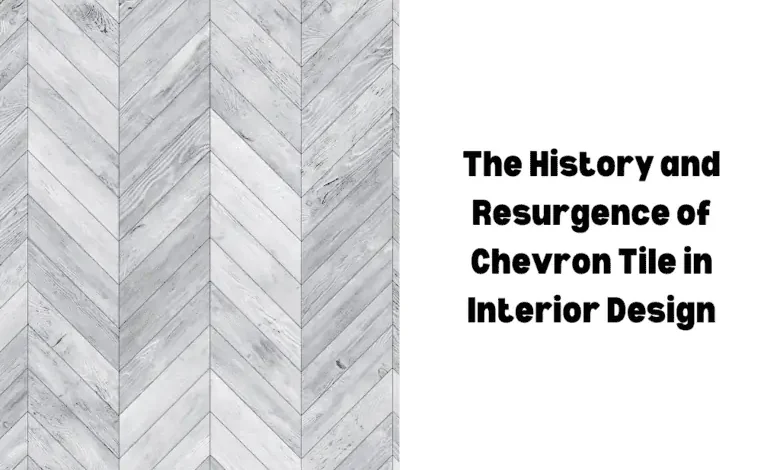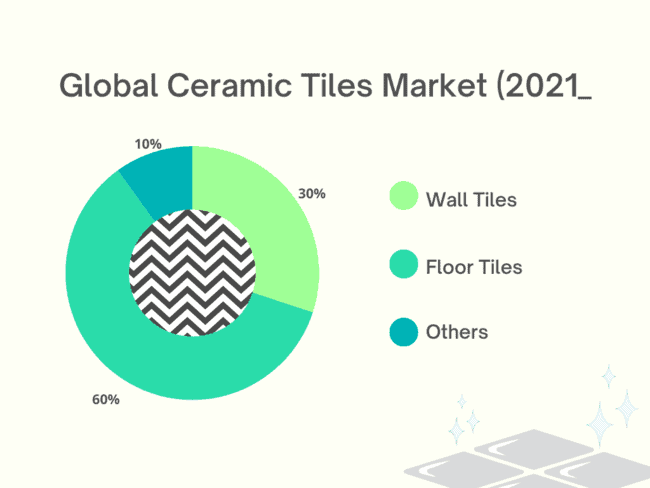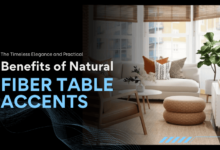The History and Resurgence of Chevron Tile in Interior Design

Chevron tile, known for its distinctive V-shape, has become a popular pattern that infuses interior spaces with a sense of movement and flow. With roots tracing back thousands of years, chevron tile has seen a major resurgence in modern interior design.
A Look Back at the Origins of Chevron Tile
While chevron tile has recently risen in popularity, its origins can be traced back over two thousand years. The pattern first emerged in ancient Greece and Rome, where artisans used it to create intricate mosaic floors and decorative walls.
The chevron design spread across Europe over the following centuries before exploding in popularity in France during the 17th century. French architects embraced the versatile zigzag aesthetic, featuring it heavily in the Baroque-style floors and walls of lavish châteaux, palaces, and churches.
The Growing Popularity of Chevron Tiles in Interior Design

After falling out of favor during the 19th century, chevron tile have seen a major revival over the last 30 years. Interior designers around the world have rediscovered these tiles, integrating them into styles ranging from traditional to modern. These tiles can be found as walls or floor patterns.
The bold and eye-catching chevron pattern injects movement and vibrancy into any space. Designers often use the tiles to make a statement—highlighting focal walls, backsplashes, fireplaces, floors, and more.
Beyond creating visual appeal, the versatility of chevron tile materials and installation patterns allows designers great freedom in realizing their visions.
Chevron Tile Patterns and Characteristics
While the classic V-shape chevron may come first to mind, there are several popular variations—including the double chevron, herringbone, and shiplap patterns.
- V-Shaped Chevron: The standard zigzag pattern, with clean lines and high contrast. Offers a bold, modern look.
- Herringbone: Subtler staggered rows, evoking a sense of order and symmetry.
- Double Chevron: Two distinct chevrons fused together per tile for amplified drama.
- Shiplap: Wide, flat chevron segments evoking the wood pattern of the same name.
The impact of each pattern shifts based on choice of materials, tile size, layout, and color scheme. Designers mix and match these elements to create bespoke looks matching their overall aesthetic.
Chevron Tile Materials: Properties and Effects
Beyond patterns, the base texture and appearance of chevron tiles bring an additional layer of design possibility. Chevron tiles come in a wealth of materials—with ceramic, porcelain, glass, marble, and stone tiles being most popular.
Ceramic tile: Offers an artsy, handmade appearance combined with budget friendliness.
| Pros | Cons |
|
|
Porcelain tile: More durable and water-resistant than ceramic. Provides greater pattern and color consistency.
| Pros | Cons |
|
|
Glass tile: Sleek and shiny surface. Allows light to pass through for a unique, eye-catching effect.
| Pros | Cons |
|
|
Natural stone tile: Elegant look and feel with high durability. Options like marble and travertine bring natural veining.
| Pros | Cons |
|
|
The texture, durability, slip resistance, and overall look of tile materials should be considered based on the demands of the space.
Installing Chevron Tiles: Process and Precautions
Installing chevron shaped tile requires careful planning and precision compared to basic grid layouts. Due to the intricate angled tile edges involved, tile installers must take precautions to achieve visually pleasing results.
Floor Preparation
- The floor must be structurally sound, level, and clean before tiling
- Any repairs should be completed prior to installation
- The surface should be primed for best adhesion
Design Layout
- A layout must determine tile size, quantities, pattern scale, and cut measurements
- The more complex the pattern, the greater the planning required.
- Room dimensions and fixed elements like niches must be mapped
Wet Saw Tile Cuts
- Using a wet saw is vital for clean, accurate angled cuts
- Rushing cuts risks creating sloppy edges or even cracking tiles.
- Cut guide strips can aid in achieving uniform results
Installing Tile Spacers
- Tile spacers create uniform grout line widths
- Spacers must be installed as each tile is set
- Uneven spacers can undermine the chevron effect
Applying Grout and Sealant
- After tile cures, grout is pushed into joints
- Grout lines should be straight, consistent widths
- Sealants protect porous tile materials from stains
Hiring an experienced tile installation professional is highly advised to ensure the intricacies of laying chevron tiles correctly. Patience and care is required at each step to realize the dramatic patterns successfully.
The Future and Growth Potential of Chevron Tiles
Chevron tile design elements seamlessly blend with both traditional and contemporary styles, and this resurging trend shows no signs of waning in popularity anytime soon.
Driven by increased consumer interest and improvements in manufacturing technology allowing for larger, more intricate tile cuts, the use of chevron tiles in interior spaces will likely only continue to grow in the coming years. Whether you’re designing an ornate wall feature or completing an entire chevron tile floor, the possibilities are boundless.
Frequently Asked Questions
What is the difference between Chevron and Herringbone tile patterns?
Chevron and Herringbone tile patterns are similar, but there are some key differences. Chevron tiles are cut at an angle and laid out in a zigzag pattern, while Herringbone tiles are cut at a 90-degree angle and laid out in a staggered pattern.
What are the best materials for Chevron tiles?
The best materials for Chevron tiles depends on the look you wish to achieve and where they will be installed. However, ceramic, porcelain, and natural stone tiles tend to be best suited for high-traffic areas whereas glass tiles work best for backsplashes and accent walls.
What are some creative ways designers use Chevron tiles?
Creative uses of Chevron tiles include highlighting specific wall features or focal points, designing decorative borders and medallions on floors and walls, and combining various Chevron tile shapes, colors, and materials to create custom patterns.






